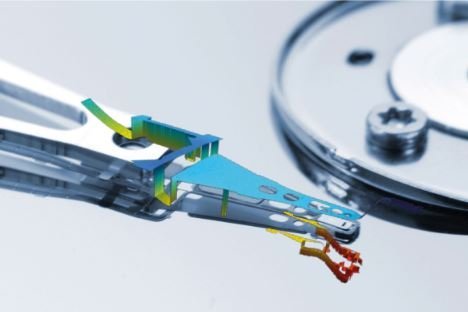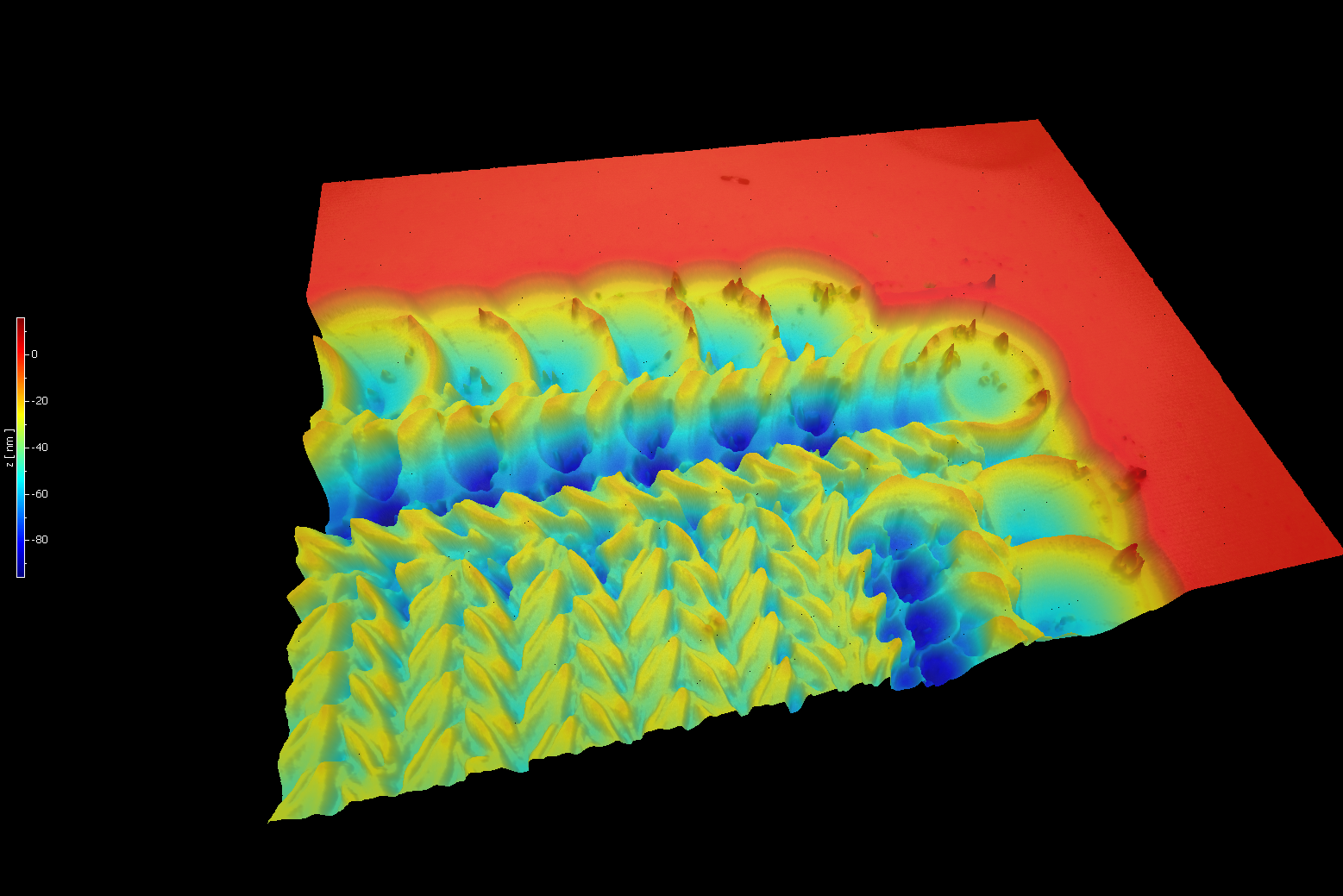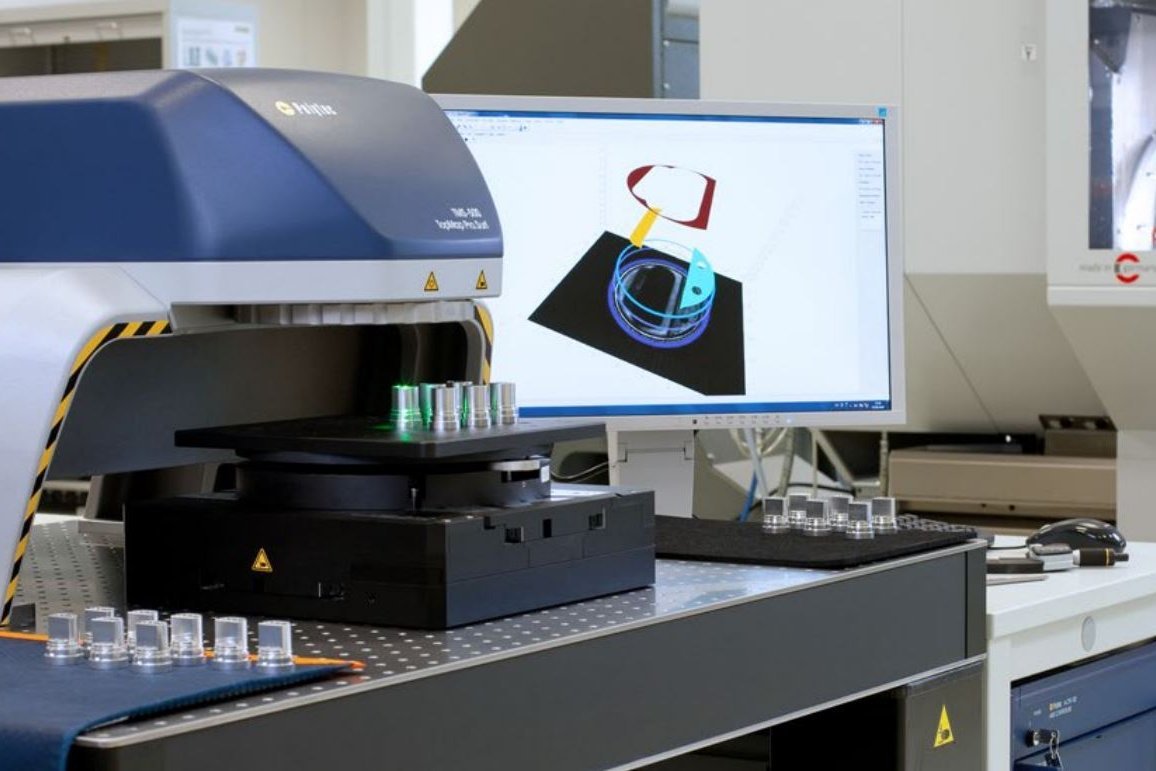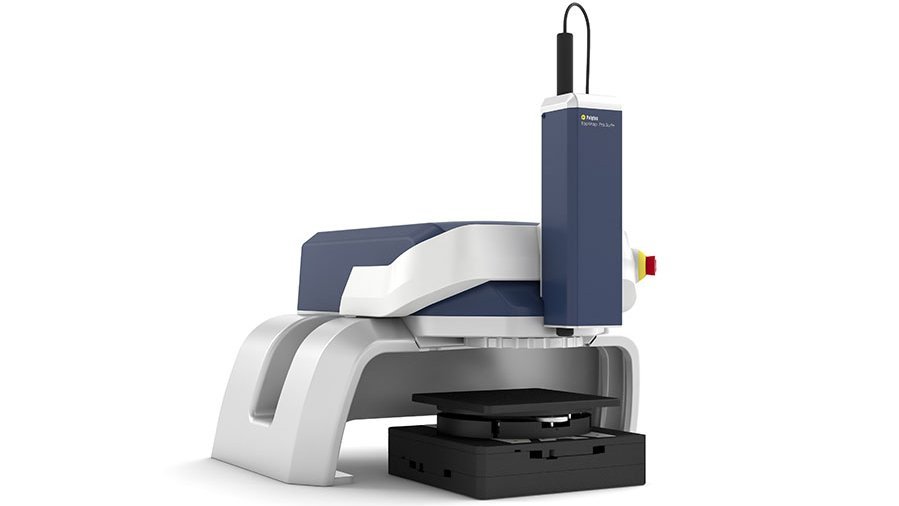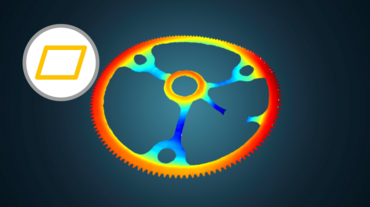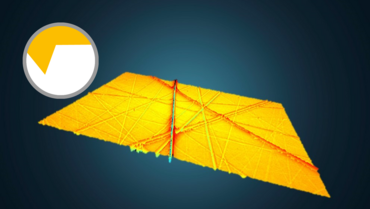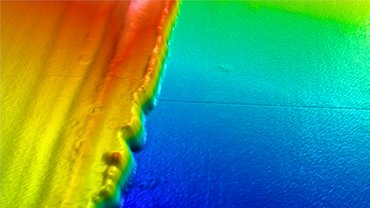Why measure step heights?
The inspection of step height plays an important role in quality inspection. For this reason, many technical drawings contain tolerance specifications for height dimensions, for example for shoulders, grooves and bores. If the specifications for step height are violated, disadvantageous gap dimensions occur or two component surfaces come into unintentional contact. This can lead to leakage at sealing surfaces, interrupted current flow at electrical contacts or increased frictional resistance and wear. In addition, the step height measurement can also be used to optimize build-up or ablation manufacturing processes; both the thickness of non-transparent layers can be determined and the material removal e. g. by laser pulses can be checked.
Free feasibility study on step height and flatness measurement

How to calculate step-height
Step height measurement is not a standardized procedure unlike other frequently tested characteristics such as flatness, parallelism or roughness evaluation. There are several calculation methods to choose from, the results of which may differ due to non-ideal geometries and measurement conditions:
- Method 1:
The step height is determined as the vertical distance between the center of gravities of two surfaces - Method 2:
The step height is determined as the vertical distance between the (extrapolated) regression plane of one measurement surface and the center of gravity of a second surface.
Method 1 referring to gravity centers shows great simplicity, but also faces high sensitivity regarding the tilt of the measurement object. Method 2 overcomes this disadvantage and is therefore the preferred way of determining step height. Because the choice of the reference plane has an influence, it must be marked in the technical drawing.
How to measure surface flatness & step-height – TopMap optical 3D surface characterization
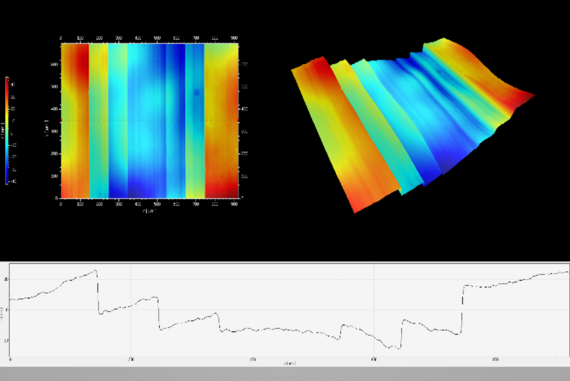
Differences of profile-based and areal-based step-height measurement
Step heights can be checked by mechanically touching the respective surfaces with a probe. With the help of coordinate measuring machines, individual measuring points are often recorded and used for the calculation. During scanning, the probe is moved over the surface in a contacting manner. The higher measuring point density is offset by a greater uncertainty of the measured values. Optical sensors allow a non-contact profiling, reaching evendeeply recessed surfaces that might not be accessible for a mechanical probe.
Both methods - tactile probers and optical line profilers - only use local measurement data, i. e. at specific points or along a profile. Using this for a close-meshed scanning of the surface is time-consuming. However, a quick scan or even random testing involves the risk of missing relevant deformations for further evaluations.
We measure step height on your demo samples - onsite or online

Automated step height inspection and pass-fail analysis
In order to ensure that each component meets the step height specification, a measurement and evaluation routine can be implemented for 100% quality control. With recipes, the TMS software offers the ideal tool to carry out the entire inspection process completely automatically with just one mouse click. Thanks to intelligent software solutions, it is even possible to dispense with sample holder in many cases. Based on defined tolerances, you receive a good/bad evaluation, so that reject parts can be sorted out manually or mechanically by communication of the measurement device with PLC/ process control.
